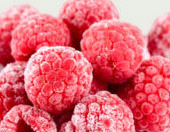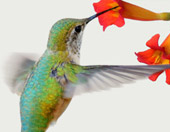
How to start a vegetable garden, Part 1
Posted in Healthy Home & Garden on November 14, 2013. Last modified on April 30, 2019. Read disclaimer.
Where to put your garden
- Sun
Most vegetables need at least 8 hours of direct sunlight each day. With only 6 hours of sun stick to non-fruiting crops such as leafy greens, cabbage, root crops. - Near the house
Out-of-sight is out-of-mind. Locate the garden close enough for easy access and daily monitoring. - Water
Another reason to locate the garden close by. Ability to water during summer months is essential. - Soil
Soil should be fertile and well-drained. Don't give up if your soil is less than perfect. It can be improved.
LOW PRICES on Amazon's Top 100* Best Selling Gardening & Lawn Care Products
+ Free Shipping & Returns on Eligible Items.
(*Amazon's Top 100 list updated hourly.)
+ Free Shipping & Returns on Eligible Items.
(*Amazon's Top 100 list updated hourly.)
How to prepare the soil
- Soil test
A soil test is the only way to find out the pH (acidity) of your soil and the nutrient status. North Carolina soils are typically too acidic and can be very low in phosphate -- but you can not tell by looking. And in many cases, soil testing is free for North Carolina gardeners and home owners. - Lime
If soil pH is below 6.5 you will need to add lime to raise the pH. Your soil report will tell you how much you need. Without a test, if soil has not been limed in several years, start with about 50 pounds of dolomitic lime per 1,000 square feet. - Phosphate
If phosphate is low your soil report will recommend a high phosphate fertilizer. Superphosphate (0-46-0) should be worked into the soil before planting. Organic gardeners can use colloidal phosphate, rock phosphate or bone meal. - Organic matter
The best thing you will do for your soil. Organic matter improves the tilth, aeration, nutrient holding capacity, buffers acidity, and improves microbial activity. Use compost, rotted leaves, pine bark soil conditioner, aged manure, etc. Start with a 3 to 4 inch layer and work in 8 to 12 inches deep. - Work wisely
Do not work soil when it's too wet. New ground should be tilled or turned once before adding lime, fertilizer and organic amendments.
How big to make your garden
- Don't start too big
You can always expand. - Will you use a rototiller or work by hand?
If you have a tiller consider starting with about 25 ft. X 25 ft. - Consider raised beds
A handy size is 4 ft. X 8 ft. - What do you plan to grow?
Com, melons, and pumpkins need a lot of room.
Plan before you plant
- Measure
You need to know how many square feet in order to calculate lime and fertilizer rates. The size will help you figure how many plants and seeds you will need. - Plan on paper
Not only will sketching out where things will go help you decide what to plant, and where, you will want to keep a record for future years. - Orientation
Running rows North and South will give best sun exposure. Planting taller crops on the North will avoid shading of shorter plants. - Seasons
You may be able to get 2 or even 3 crops per year from some garden spaces. Maximize available garden space by planning what can be planted in June after the early crops are harvested. Here are a couple good maps for the average last frost date in spring and first expected frost date in fall.
What to plant
- What do you buy at the grocery? What will your family eat? What is most expensive to buy?
- Do you plan to have enough to can or freeze?
- Do you have room for com or melons?
- Variety selection: consider disease resistance, heirloom vs. hybrid, plant size, harvest season, family preferences.
- It's fun to try something new. But for your first garden it might be best to stick to basics.
When to plant
- Planting dates. Planting guides, catalogs and seed packets will provide guidance. Do not plant warm-season crops too early, or cool-season crops too late.
- Soil temperature. A soil thermometer is helpful for timing spring plantings. Seeds will rot if the soil is too cold. Check guides for recommended soil temperatures.
How to plant
- Seeds
Refer to seed packet or guides for planting depth -- generally about 3 -4 times the diameter of the seed. We often plant seeds a little closer than needed, then thin later. - Rows vs. beds
Large-growing plants are usually planted in single rows or by "square foot" in raised beds. Leafy plants such as lettuce, greens, onions, beets may be scattered in a square bed or wide row. - Transplants
Buy healthy, short and stocky plants. Avoid old, overgrown plants. Don't plant too early unless planning frost protection. Do not plant too deep (except tomatoes). - Spacing
Do not over-crowd your plants! Allow proper spacing between transplants. Thin seedlings before they get too crowded, usually when 1 to 2 sets of true leaves.
 How being in love can effect our health
How being in love can effect our health How to cut onions without crying
How to cut onions without crying Hidden toxins in our homes and schools
Hidden toxins in our homes and schools Strategy for success with New Years resolutions
Strategy for success with New Years resolutions Tips for properly freezing foods
Tips for properly freezing foods Importance of strength training for seniors
Importance of strength training for seniors BBQ health and safety tips
BBQ health and safety tips Attracting butterflies to your garden
Attracting butterflies to your garden Teaching values to our kids
Teaching values to our kids Guide to beginning a vegetable garden
Guide to beginning a vegetable garden Attracting birds and hummingbirds
Attracting birds and hummingbirds How to prevent birds from flying into glass windows
How to prevent birds from flying into glass windows When to take a child to the hospital
When to take a child to the hospital